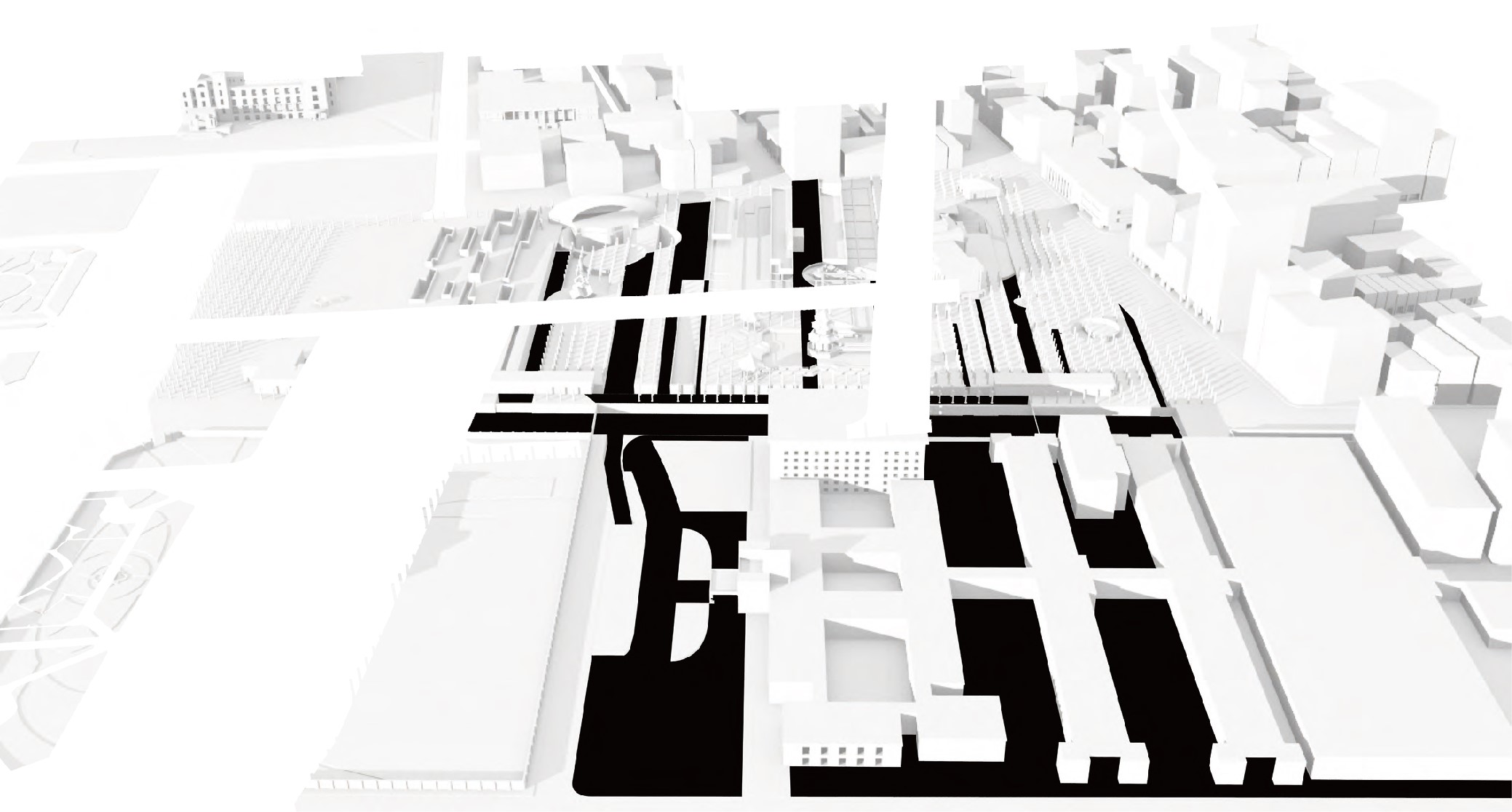
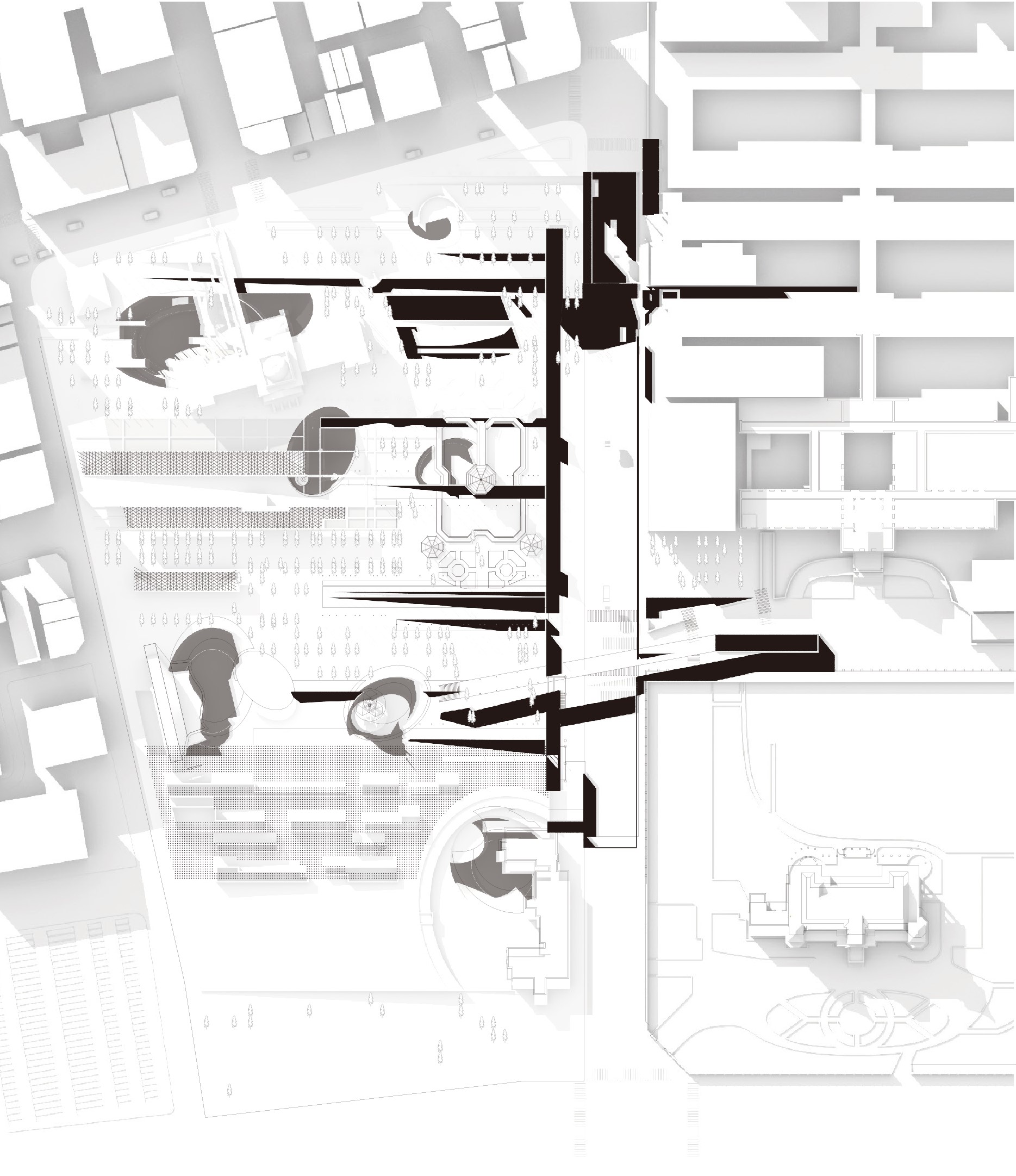
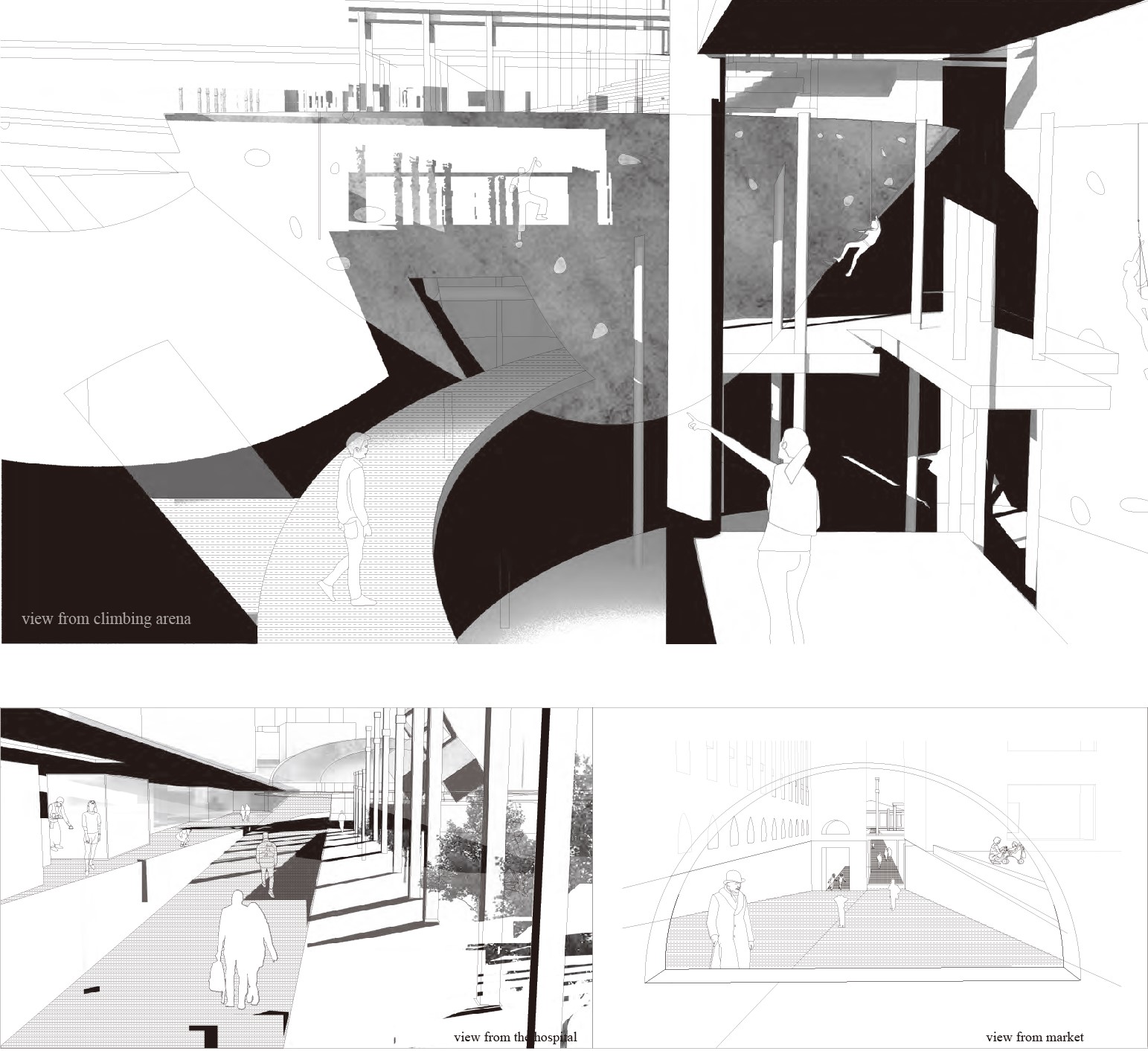
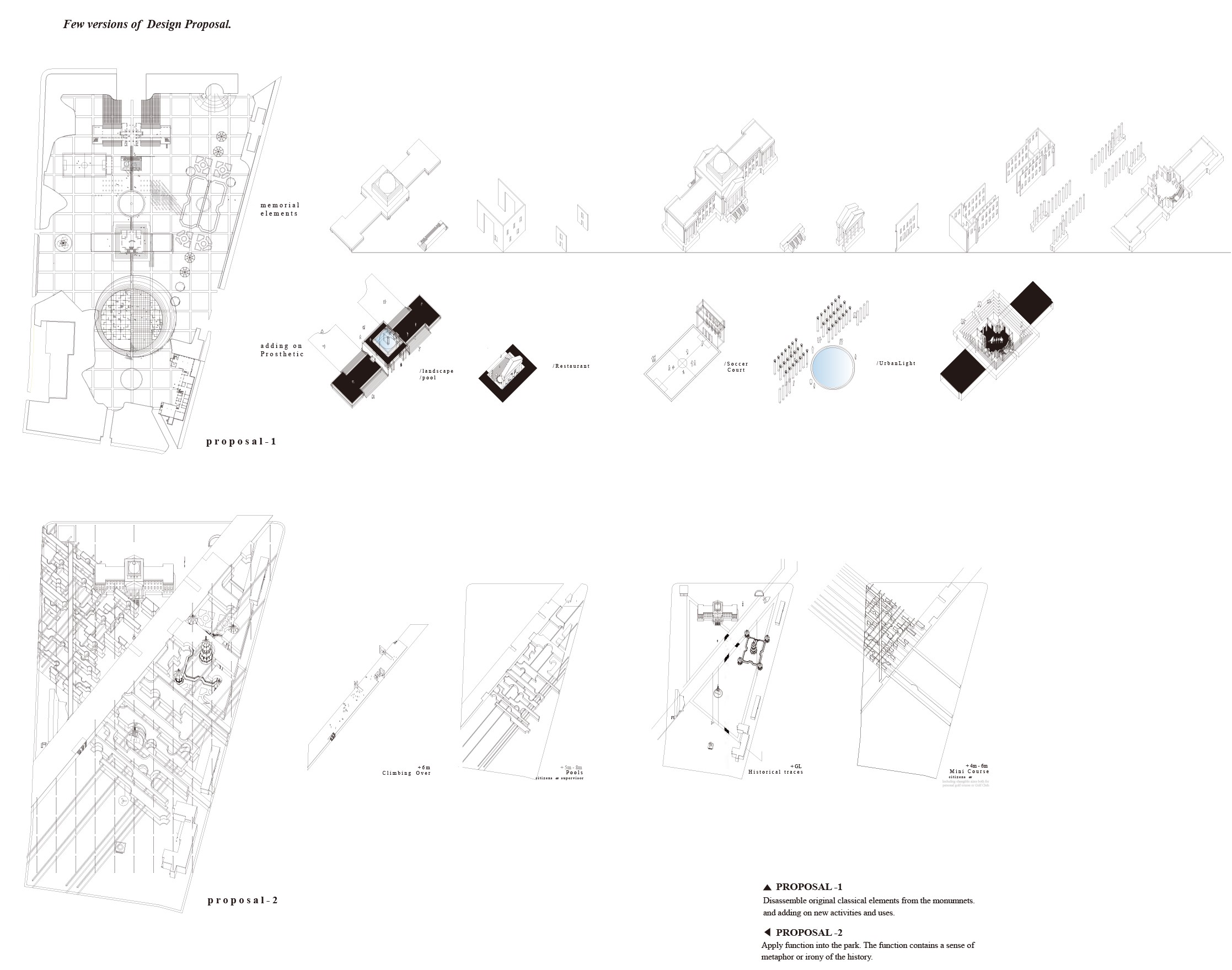
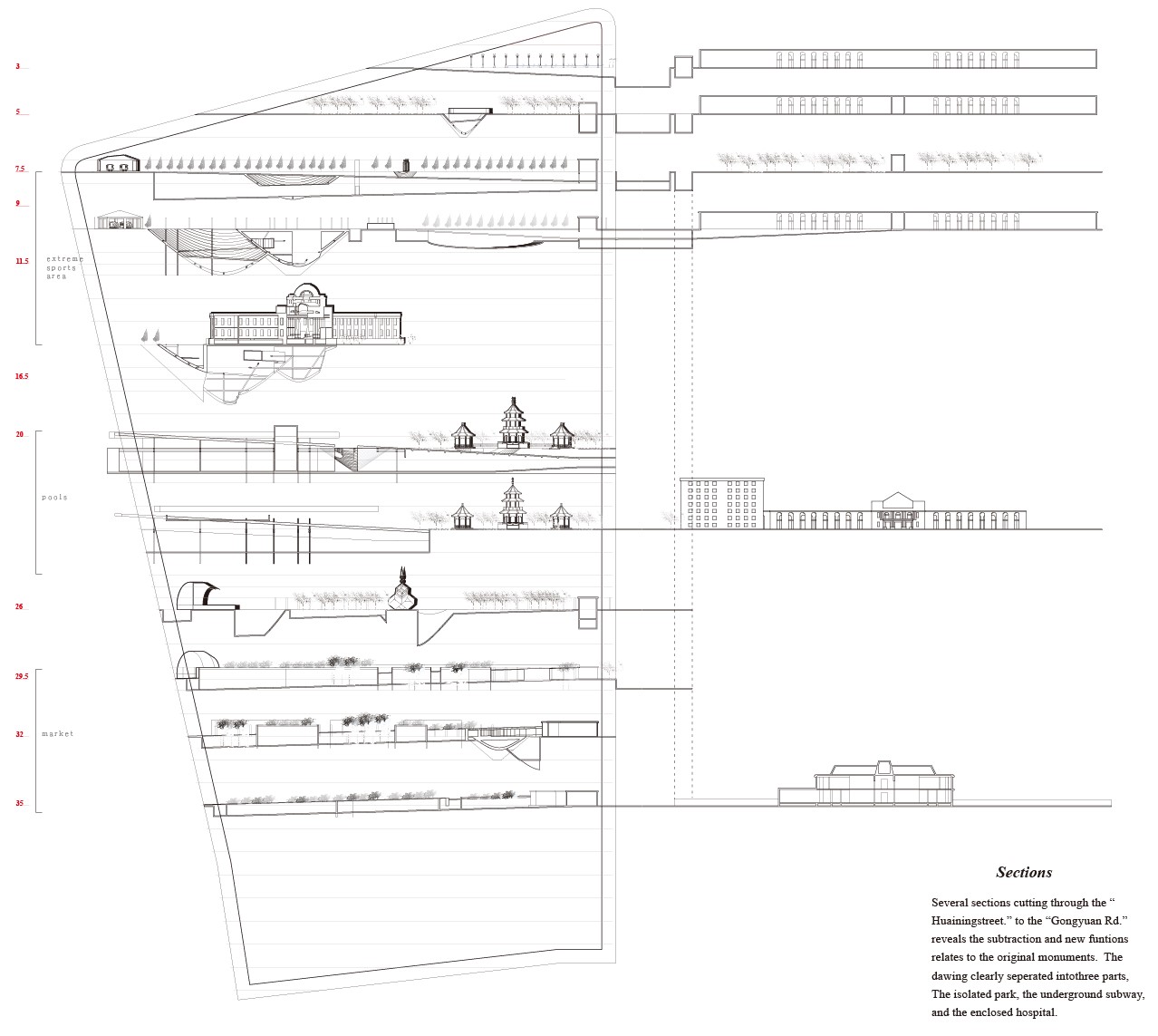
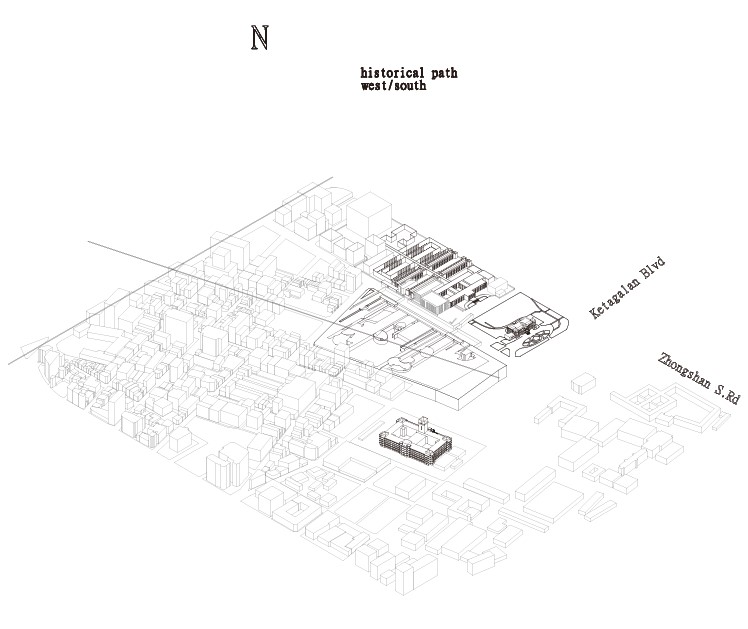







Architectural Prosthetic on Contemporary Monuments
台灣 / taiwan
李思萱 / Szu Hsuan Lee
紀念物一年 365 天被擺放著,卻只有 1 天被重新提醒。228 作為臺北城的縮影,嘗試嫁接未來 364 天的紀念性。『 近期號稱為紀念物的,皆便成了空殼,他們在任何一方面都無法表現出現代的精神和集體的感覺。』1943 年 Sigfried Giedion 等人在 “ 紀念性的九個要素 ” 中,對當時戰後大量製造的紀念物做的做了註解。紀念物應當是人類集體的力量轉化為象徵,而非工業革命後,城市互相較勁高度的現代方尖碑。 古典紀念性,在帝國和政權的領導下,不能被忽略的是 ; 相對巨型尺寸,對稱軸線性,單一指向。 這種巨型尺度的紀念物容易被執行,卻也很容易被遺忘。而被遺留下來的政權紀念物,是否還有當代人們的共同意識記憶或認同感? 何謂當代新形態紀念性 ; 某刻當下的時間點,暫時性確俱規模的聚集,臨亂的秩序,不管是 2000 年 Krzysztof Wodiczko ” The Arc de Triomphé: World Institute for the Abolution of War ” 的展覽 ; 或是 2015 世博會主辦人之一 Jacques Herzog “ you can leave behind the great monument – Anti Monument. ” 如何以幽默,諷刺的想像,對舊有高不可攀的神聖紀念物,執行一種新的嫁接手術?
Monuments ; Situated as useless buildings and pointless landscapes. Through a series of experiments, developed prosthetics and new function to original monuments. By applying new meaning on it, it mayintrigue a whole new issue for it.Take 228 memorial park as a beginning target. The park was seen as the miniature of old Taipei city. It contains has numerous abandoned monuments, such as, “ 228 memorial sculpture “ to Greek Revival style “ National Taiwan Museum”, conventional Chinese garden and so on.
More Projects of this Session
展區其他作品
紀念物一年 365 天被擺放著,卻只有 1 天被重新提醒。228 作為臺北城的縮影,嘗試嫁接未來 364 天的紀念性。『 近期號稱為紀念物的,皆便成了空殼,他們在任何一方面都無法表現出現代的精神和集體的感覺。』1943 年 Sigfried Giedion 等人在 “ 紀念性的九個要素 ” 中,對當時戰後大量製造的紀念物做的做了註解。紀念物應當是人類集體的力量轉化為象徵,而非工業革命後,城市互相較勁高度的現代方尖碑。 古典紀念性,在帝國和政權的領導下,不能被忽略的是 ; 相對巨型尺寸,對稱軸線性,單一指向。 這種巨型尺度的紀念物容易被執行,卻也很容易被遺忘。而被遺留下來的政權紀念物,是否還有當代人們的共同意識記憶或認同感? 何謂當代新形態紀念性 ; 某刻當下的時間點,暫時性確俱規模的聚集,臨亂的秩序,不管是 2000 年 Krzysztof Wodiczko ” The Arc de Triomphé: World Institute for the Abolution of War ” 的展覽 ; 或是 2015 世博會主辦人之一 Jacques Herzog “ you can leave behind the great monument – Anti Monument. ” 如何以幽默,諷刺的想像,對舊有高不可攀的神聖紀念物,執行一種新的嫁接手術?
Monuments ; Situated as useless buildings and pointless landscapes. Through a series of experiments, developed prosthetics and new function to original monuments. By applying new meaning on it, it mayintrigue a whole new issue for it.Take 228 memorial park as a beginning target. The park was seen as the miniature of old Taipei city. It contains has numerous abandoned monuments, such as, “ 228 memorial sculpture “ to Greek Revival style “ National Taiwan Museum”, conventional Chinese garden and so on.